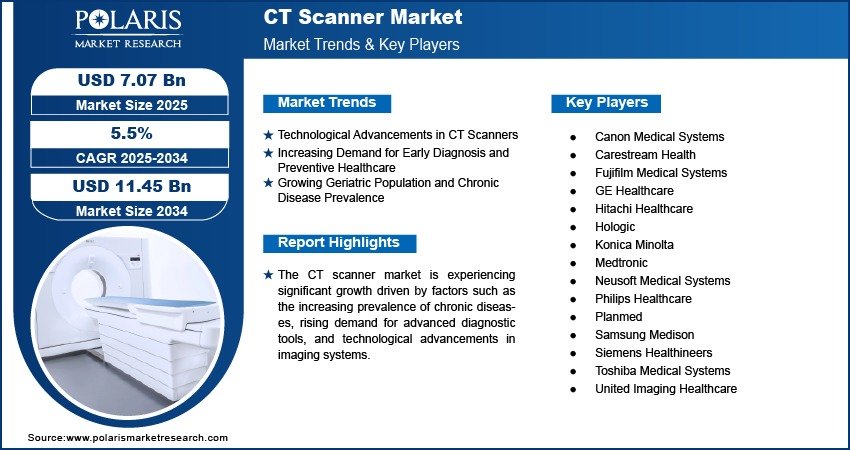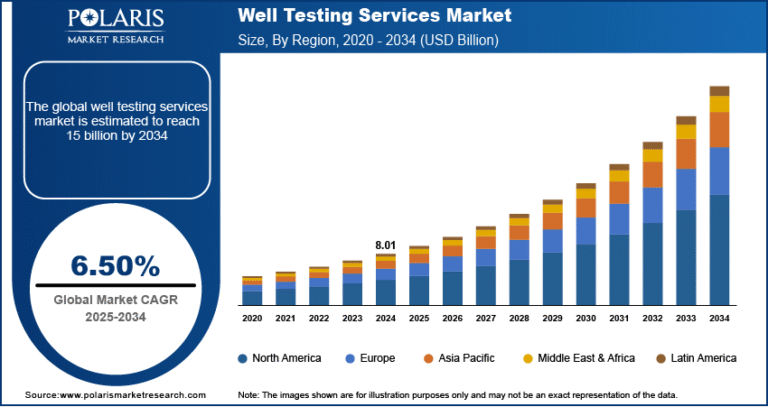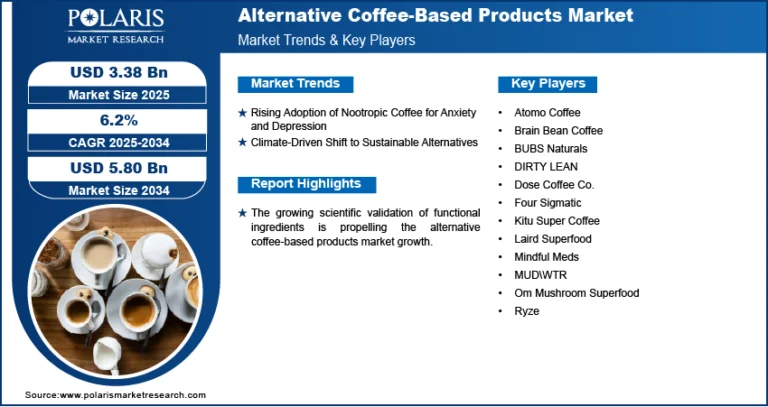CT Scanner Market Projected to Reach USD 11.45 Billion By 2034, Growing at a CAGR of 5.5%

The global CT scanner market size was valued at USD 6.72 billion in 2024 and is projected to grow from USD 7.07 billion in 2025 to USD 11.45 billion by 2034 , exhibiting a Compound Annual Growth Rate (CAGR) of 5.5% during the forecast period from 2025 to 2034 .
- Rising Demand for Advanced Diagnostic Imaging: The increasing prevalence of chronic diseases such as cancer, cardiovascular disorders, and neurological conditions is driving demand for high-resolution diagnostic imaging tools like CT scanners.
- Growth in Oncology and Emergency Diagnostics: Computed Tomography (CT) scanners are widely used in oncology for tumor detection, staging, and treatment planning, as well as in emergency departments for rapid diagnosis of trauma and stroke patients.
- Technological Advancements in Imaging Technology: Manufacturers are launching advanced CT systems with features such as low-dose radiation, faster scanning times, AI -powered image reconstruction, and enhanced 3D/4D imaging capabilities.
- Expansion of Healthcare Infrastructure in Emerging Markets: Increasing investments in healthcare infrastructure, especially in Asia Pacific and Latin America, are facilitating the adoption of CT scanners in both public and private hospitals.
- Integration with Artificial Intelligence (AI): AI-driven analytics and machine learning algorithms are being integrated into CT imaging systems to improve diagnostic accuracy, reduce radiologist workload, and enhance early disease detection.
Market Size & Forecast
- Market Size in 2024 – USD 6.72 billion
- Market Size in 2025 – USD 7.07 billion
- Projected Market Size by 2034 – USD 11.45 billion
- CAGR (2025–2034) – 5.5%
Computed Tomography (CT) scanners are advanced medical imaging devices that use X-ray equipment and computer processing to generate detailed cross-sectional images of the body. These scanners are essential tools in hospitals, diagnostic centers, and research facilities for diagnosing a wide range of conditions including cancers, cardiovascular diseases, pulmonary embolisms, and traumatic injuries.
The market is experiencing steady growth driven by rising incidence of lifestyle-related diseases, increasing demand for minimally invasive diagnostic services and advancements in imaging technology. Additionally, the growing geriatric population—which is more prone to chronic illnesses—along with the expansion of tele-radiology services, is further fueling market expansion.
Technological innovation continues to shape the future of the CT scanner industry. Companies are investing heavily in R&D to develop compact, portable, and low-dose CT systems suitable for point-of-care applications. Strategic partnerships between imaging solution providers and healthcare institutions are also accelerating the integration of AI-based diagnostic tools. As healthcare systems continue to modernize globally, the PET CT scanner market is poised for sustained growth over the next decade.






